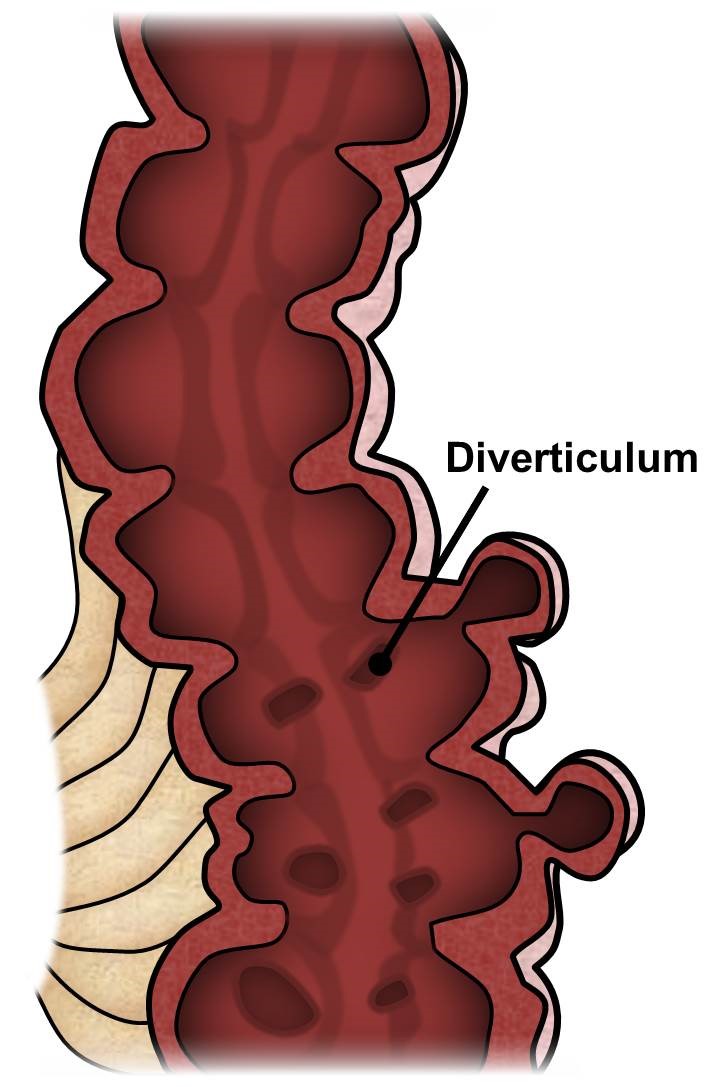Metro Colon Rectum - Proctology Corner – Diverticulitis
Diverticular disease, diverticulosis, is a benign condition involving outpouchings of the colon through weakened areas in the colon wall. When these outpouchings get inflamed or infected, diverticulosis becomes diverticulitis. The incidence of diverticular disease is on the rise in industrialized nations presumably secondary to the increase in processed food consumption and a lower fiber diet. As our understanding of diverticulitis has evolved there has been a shift towards outpatient management of diverticulitis. This has subsequently led to an increase in minimally invasive surgery in the management of diverticulitis and decreased the incidence of ileostomy or colostomy formation.
Traditional symptoms of diverticulitis include left sided pain, change in bowel function, fevers and signs of inflammation. More advanced cases of diverticulitis also include stool draining into the bladder, stool draining into the vagina or narrowing of the colon causing obstruction. The initial diagnostic work up for diverticulitis centers on an office-based exam including proctoscopy, secondary studies include blood tests, cross sectional imaging and a colonoscopy. Based on the degree of inflammation, treatment can range from dietary changes with or without antibiotics to radiographic drainage or surgery.
The surgical management of diverticulitis involves removing the affected portion of colon. Statistically, this is the sigmoid colon which is in the left lower quadrant of the abdomen. The sigmoid colon is approximately 15-30cm in length and is near the bladder and other anatomic structures of the pelvis. Surgery involves mobilizing the sigmoid colon from its anatomic attachments and freeing it from its adhesions from diverticular inflammation. Once the sigmoid colon is mobile, it is stapled on both sides and removed from the body. The upstream colon and the rectum are then joined using a stapling device. Elective diverticulitis surgery is typically performed with a minimally invasive technique, laparoscopic or robotic. Elective diverticulitis surgery typically takes three to six hours depending on inflammation and patient anatomy. The post operative hospital stay is between two to five days.
In situations where diverticulitis has invaded another organ: bladder, vagina, uterus, small bowel; surgery can be more complex and may involve multiple surgeons. Complex diverticulitis surgery has a higher incidence of ileostomy or colostomy creation to help minimize patient morbidity and mortality in the post operative phase of care. Most of these ostomies are reversible.
The source of the image: https://fascrs.org/patients/diseases-and-conditions/a-z/diverticular-disease-expanded-version

